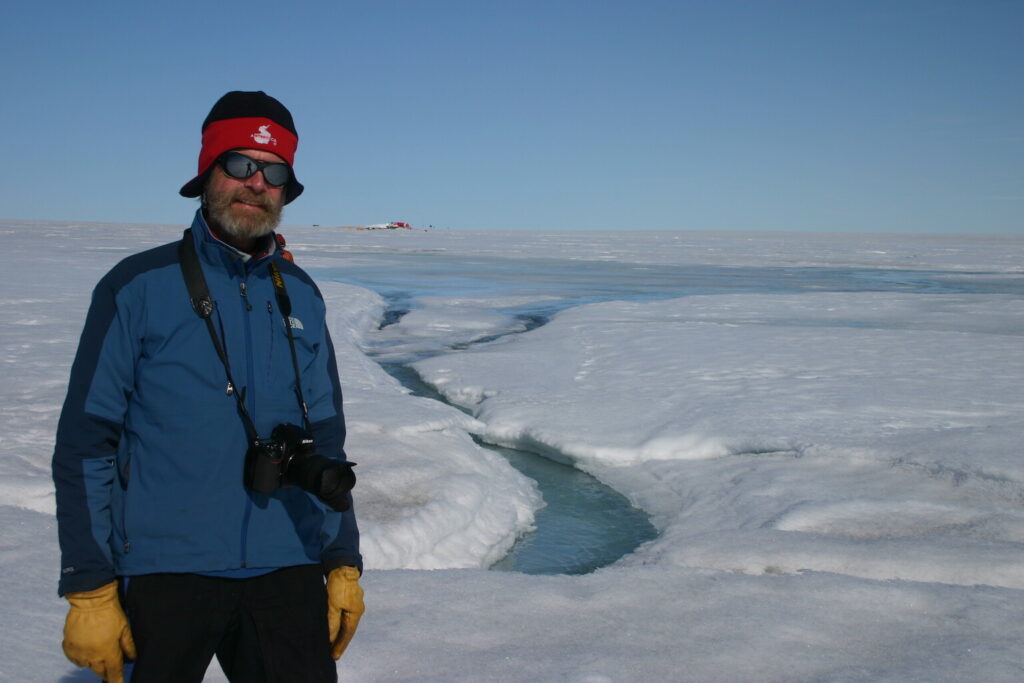The Greenland Place Name Committee has named a glacier ‘Sermeq Konrad Steffen’ after the late Konrad Steffen, former director of the Cooperative Institute for Research in Environmental Sciences (CIRES), at the University of Colorado Boulder.
The homage to Steffen, along with two other renamed glaciers, will be the first time in decades that official Greenlandic maps will have new place names recognizing people of non-Greenlandic origin.
Steffen, who directed the Cooperative Institute for Research in Environmental Sciences (CIRES) at CU Boulder from 2005-2012, is one of three deceased glaciologists honored, all of whom spent the larger part of their lives uncovering scientifically and socially invaluable knowledge about the ebb and flow of the Greenland ice sheet in response to climate changes.
“This is an incredibly unique event, a literal ‘once-in-a-lifetime’ cultural honor,” said William Colgan, a senior researcher from GEUS (Geological Survey of Denmark and Greenland), who coordinated the proposal to name the glaciers. Colgan earned his PhD at CU Boulder, advised by Steffen. He worked on the glacier naming proposal with CIRES director Waleed Abdalati and colleagues from Asiaq Greenland Survey, the University of Copenhagen and the Swiss Federal Institute for Forest, Snow and Landscape Research.
Abdalati also earned his PhD at CU Boulder, was one of Steffen’s first graduate students and now leads the institution his former advisor once led. The proposal for three new glacier names ultimately had over 60 unique contributing stakeholders coordinated by a nine-person proposal committee.
Eva Mätzler, former member of Asiaq, Greenland Survey, now with Greenland’s Bureau of Mineral Resources, said, “It is a great privilege to be part of this initiative. In addition to honoring these three extraordinary candidates, this initiative promotes discussion of the Greenlandic cultural heritage of place names to the broader public.”
Steffen died in an accident last August doing field work on the ice sheet near Ilulissat in southwest Greenland. In 1990, Steffen established a series of automatic weather stations on the ice sheet, which still continues to deliver data today. He documented increases in air temperatures and melt rates due to climate change, and his measurements have been used by research groups around the world.
The place name committee gave the name ‘Sermeq Konrad Steffen’ to a marine-terminating glacier in North Greenland that provides a strong connection between the ice sheet and the ocean.
The committee also honored Niels Reeh and Anker Weidick with glaciers in the far north and south of Greenland, respectively. Reeh worked for the Danish Polar Center, GEUS and other institutions, mapping Greenlandic glaciers from satellite imagery and innovating ways to measure the age of the ice sheet. Weidick, who spent his entire career at GEUS, provided the first systematic inventory of all ice-sheet glaciers and their names, and he mapped present and historical ice margins around 35% of the ice sheet using aerial photographs and field work.
“The contributions of these scientists to the understanding of Greenland and the critical role it plays in influencing, responding to and recording climate are immeasurable,” Abdalati said. “Their work has led to a scientific appreciation for Greenland that complements its natural beauty and wonder.”



